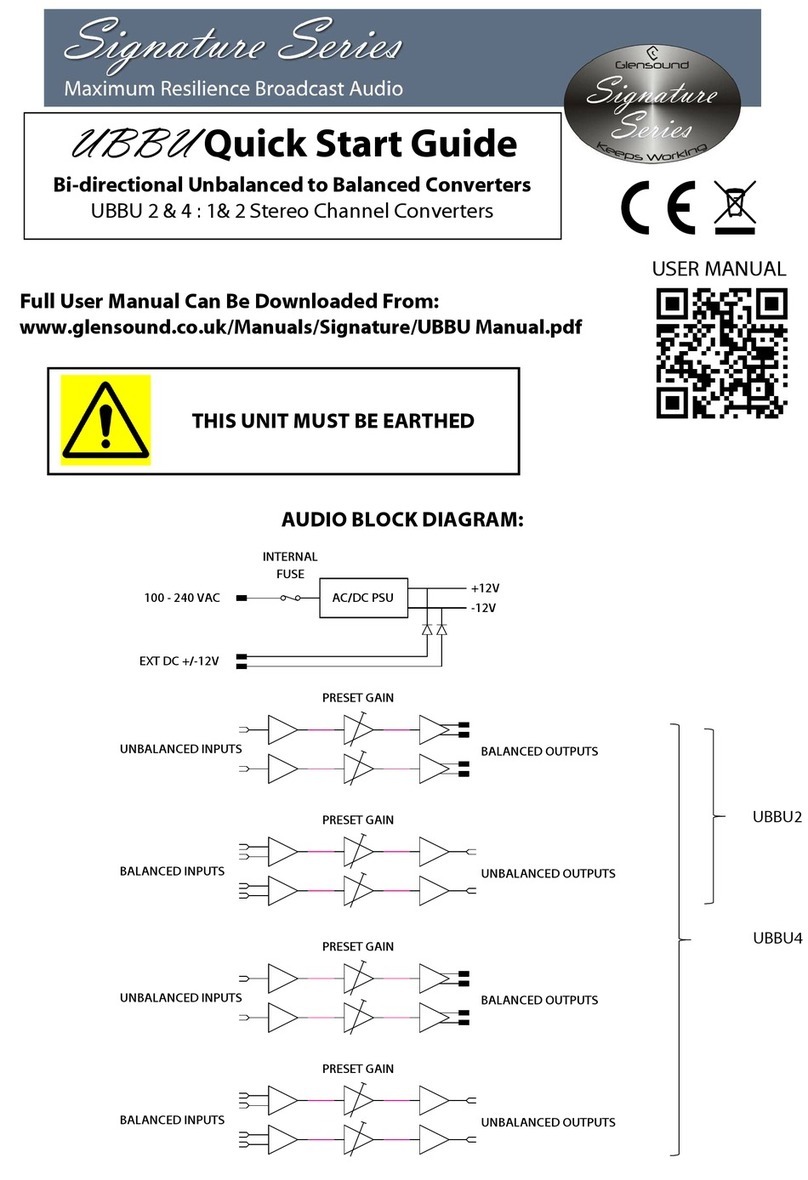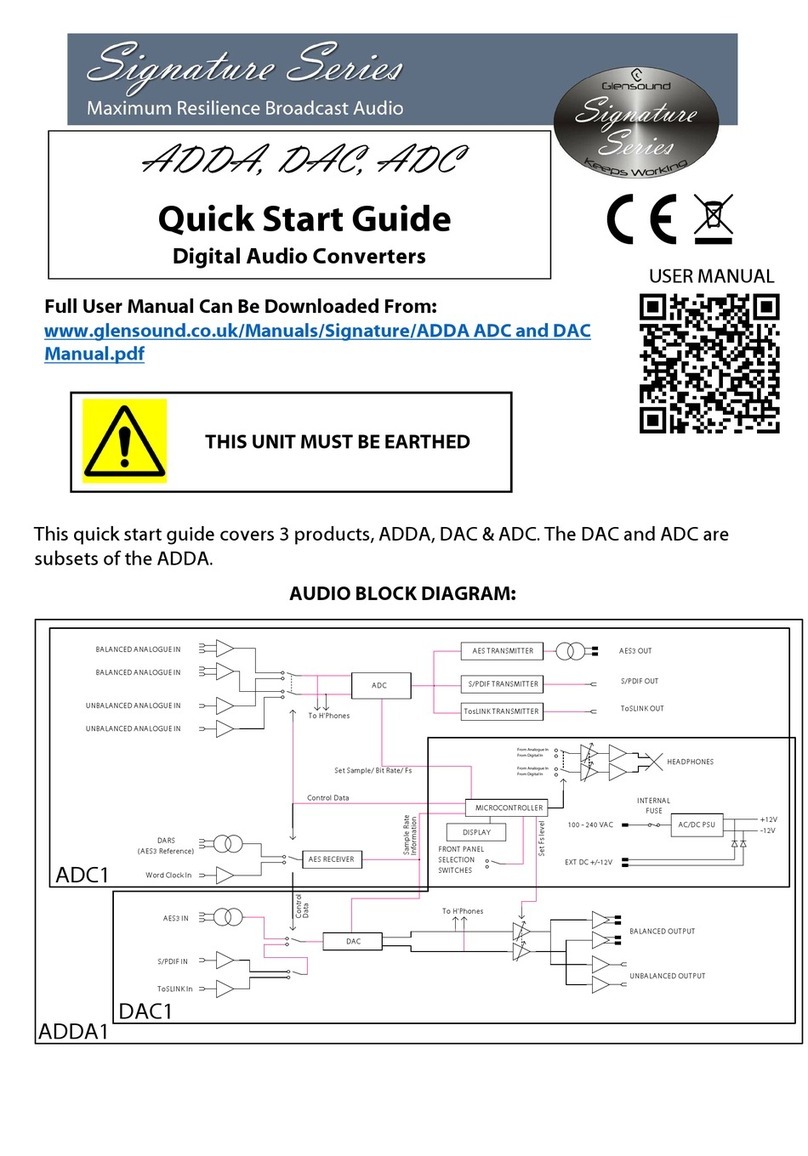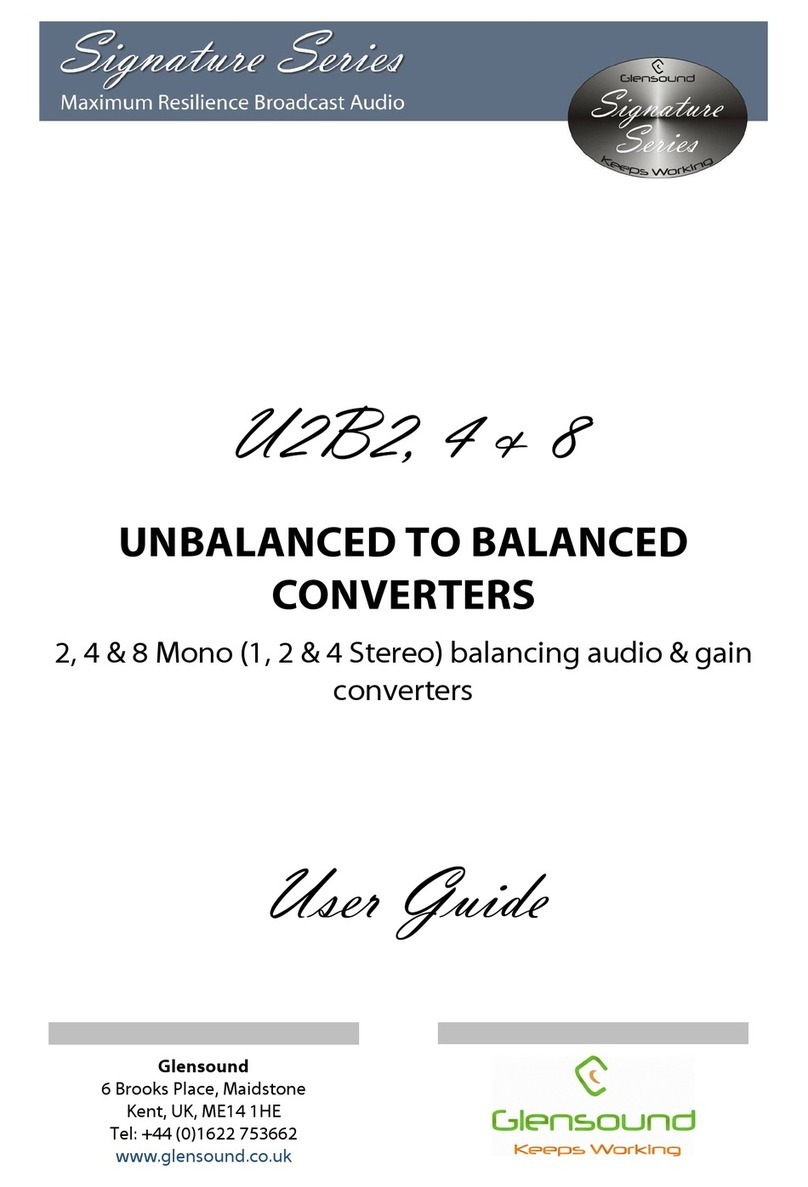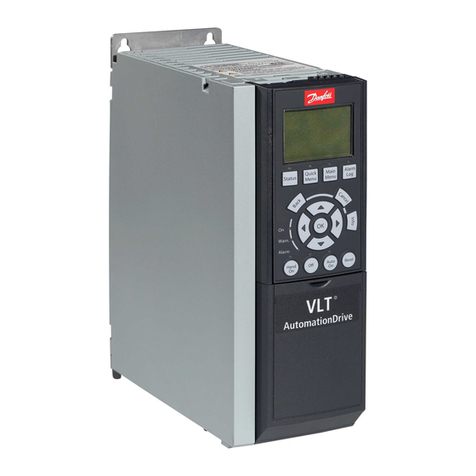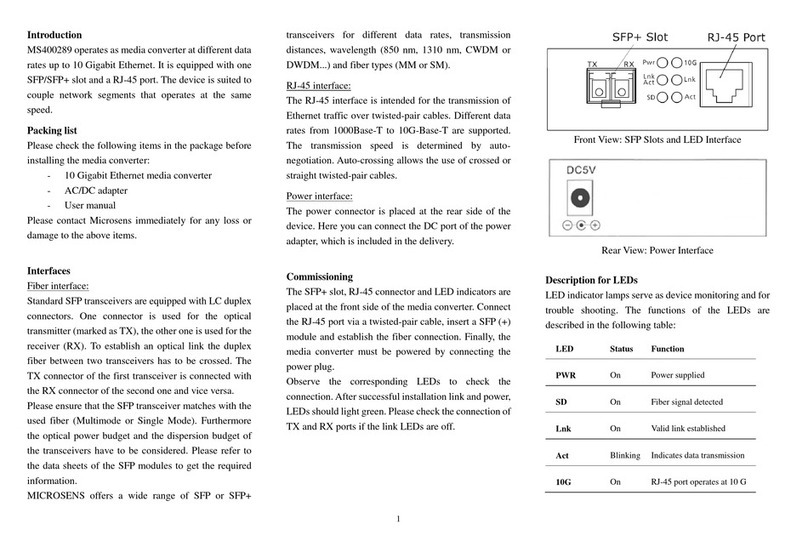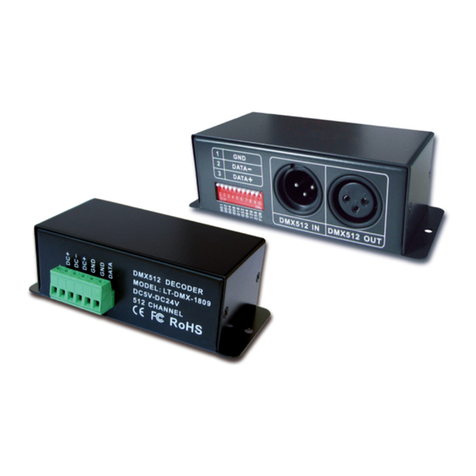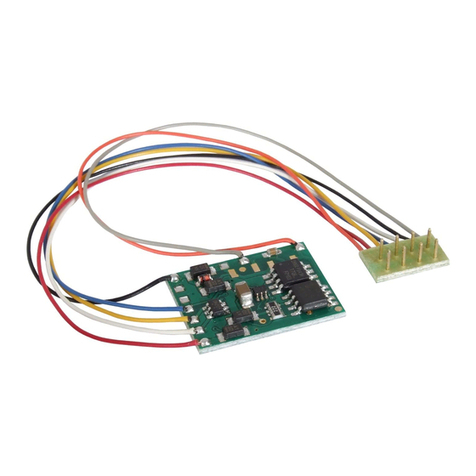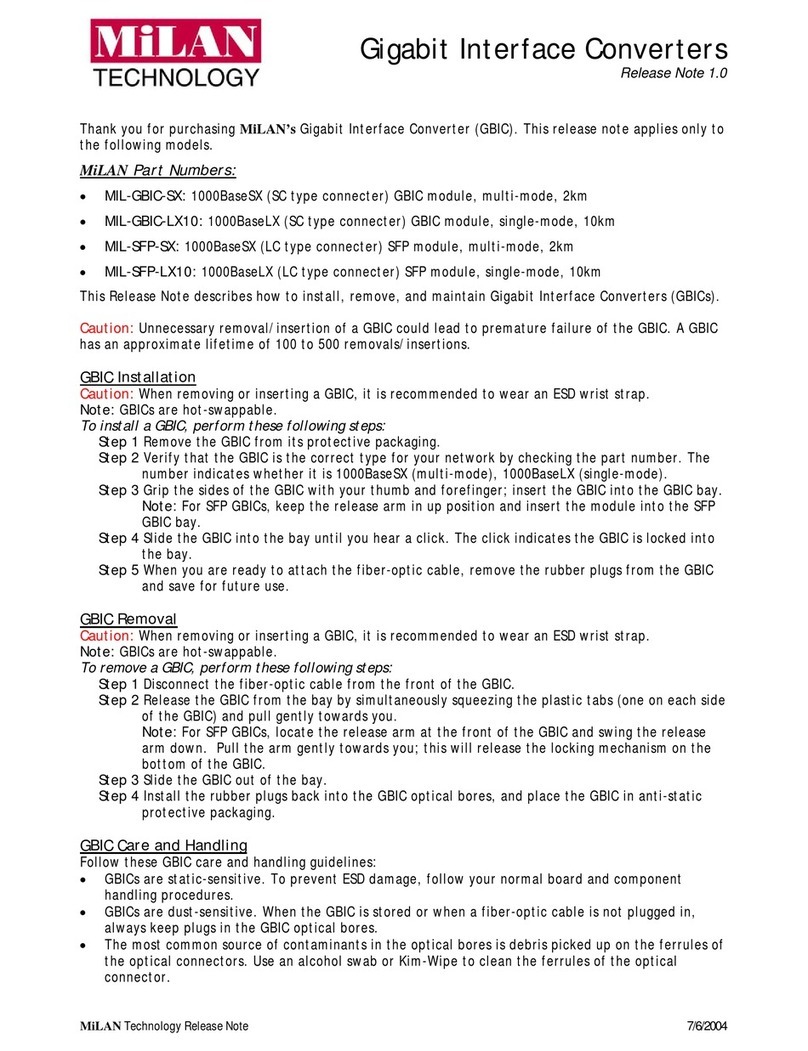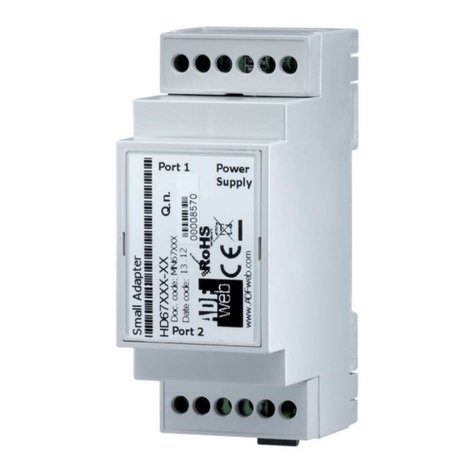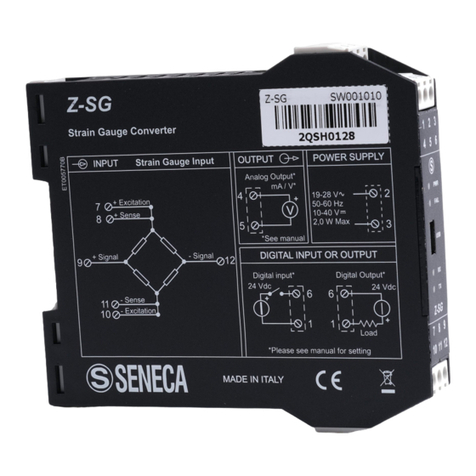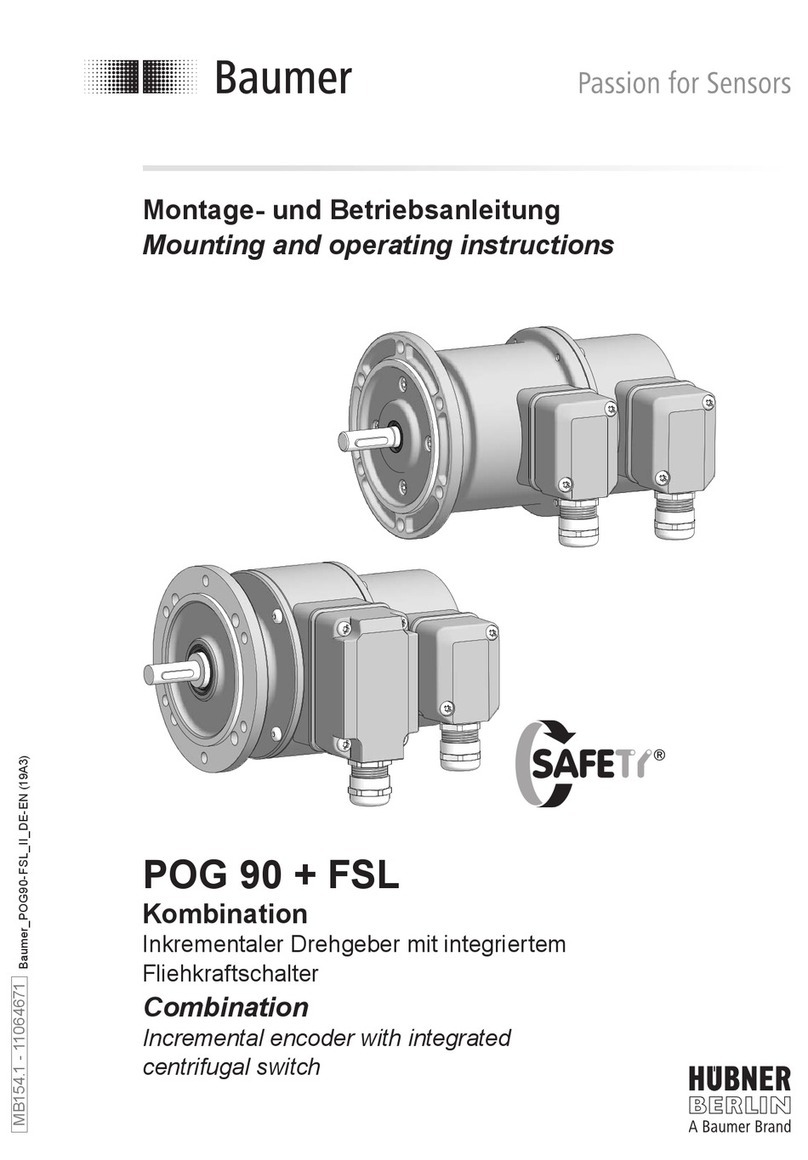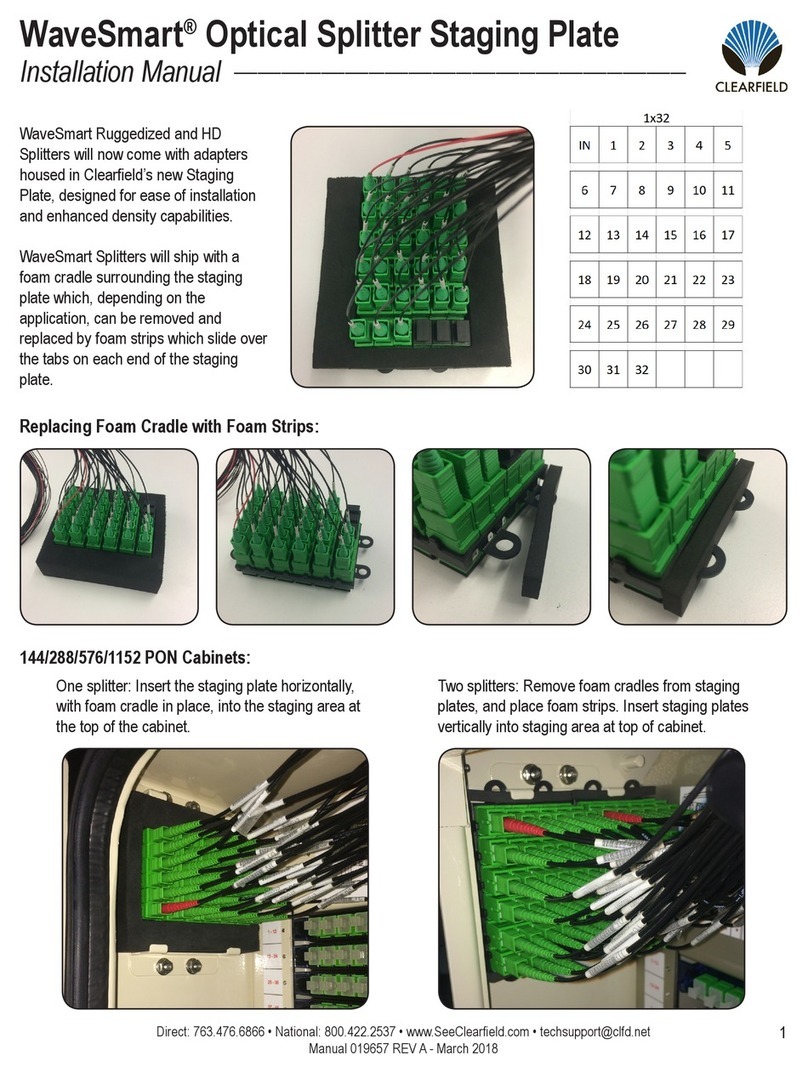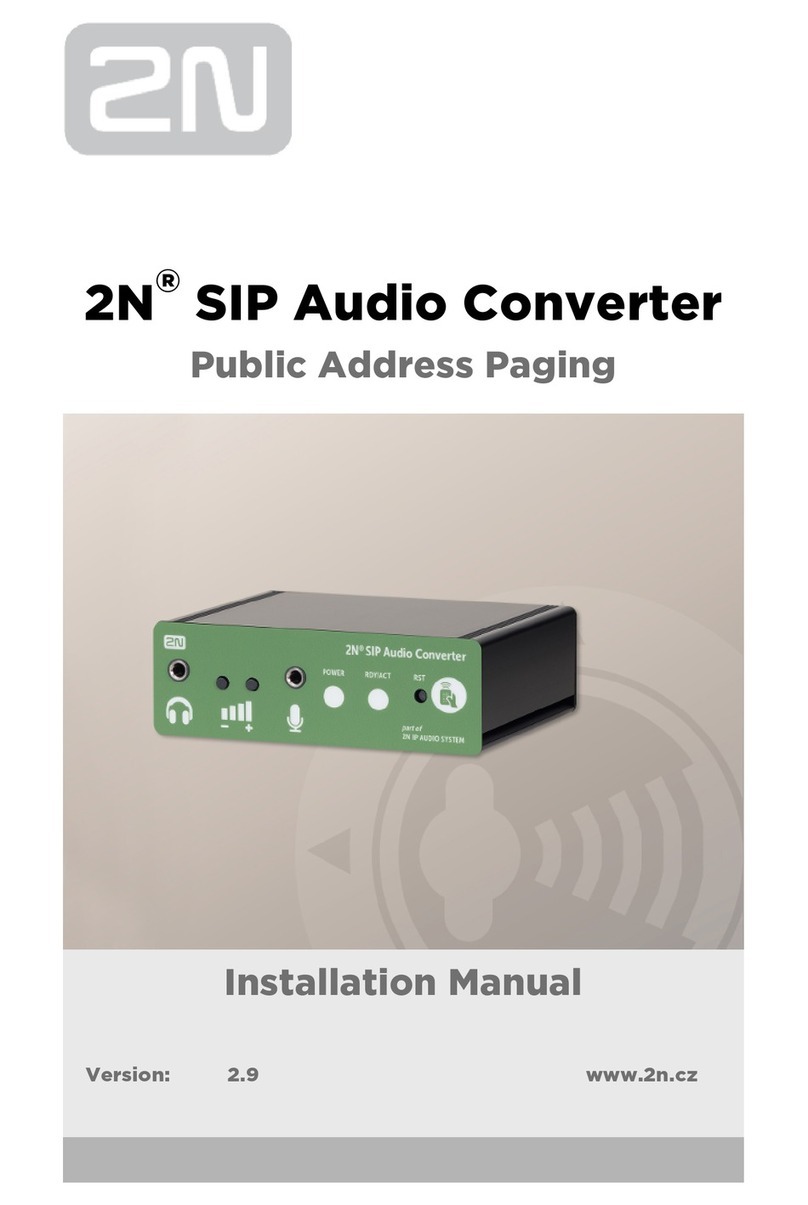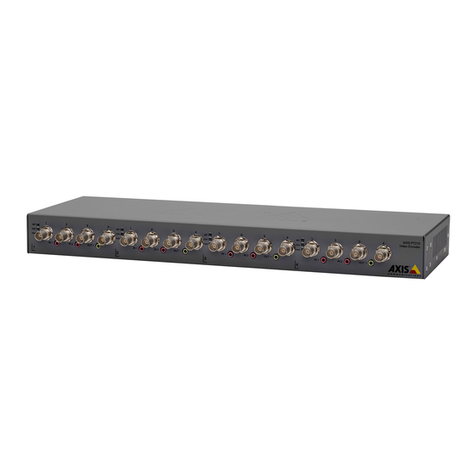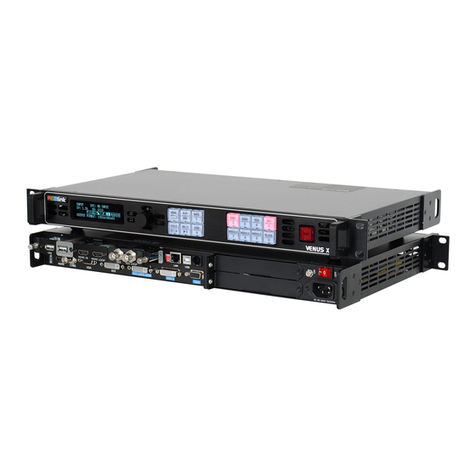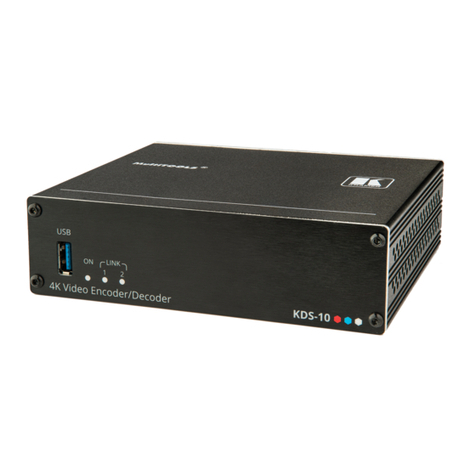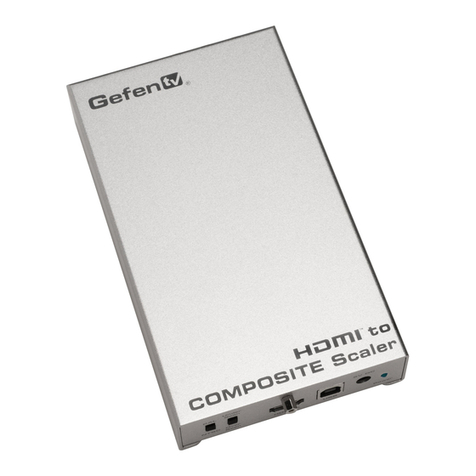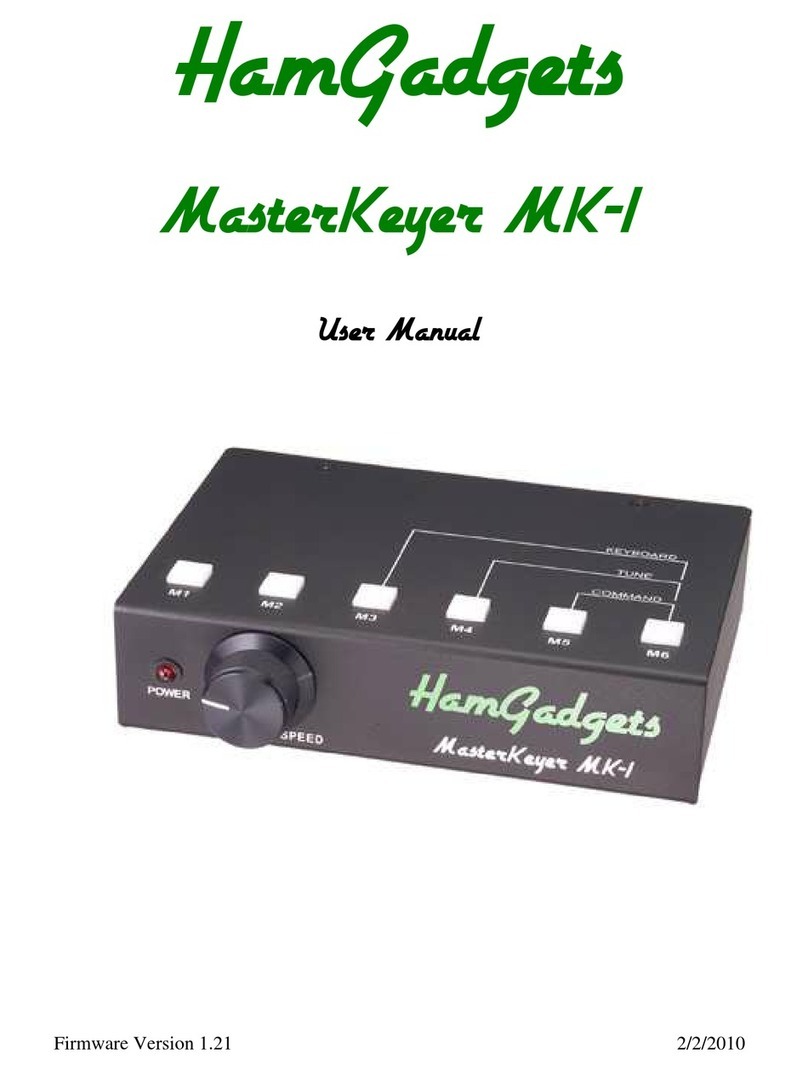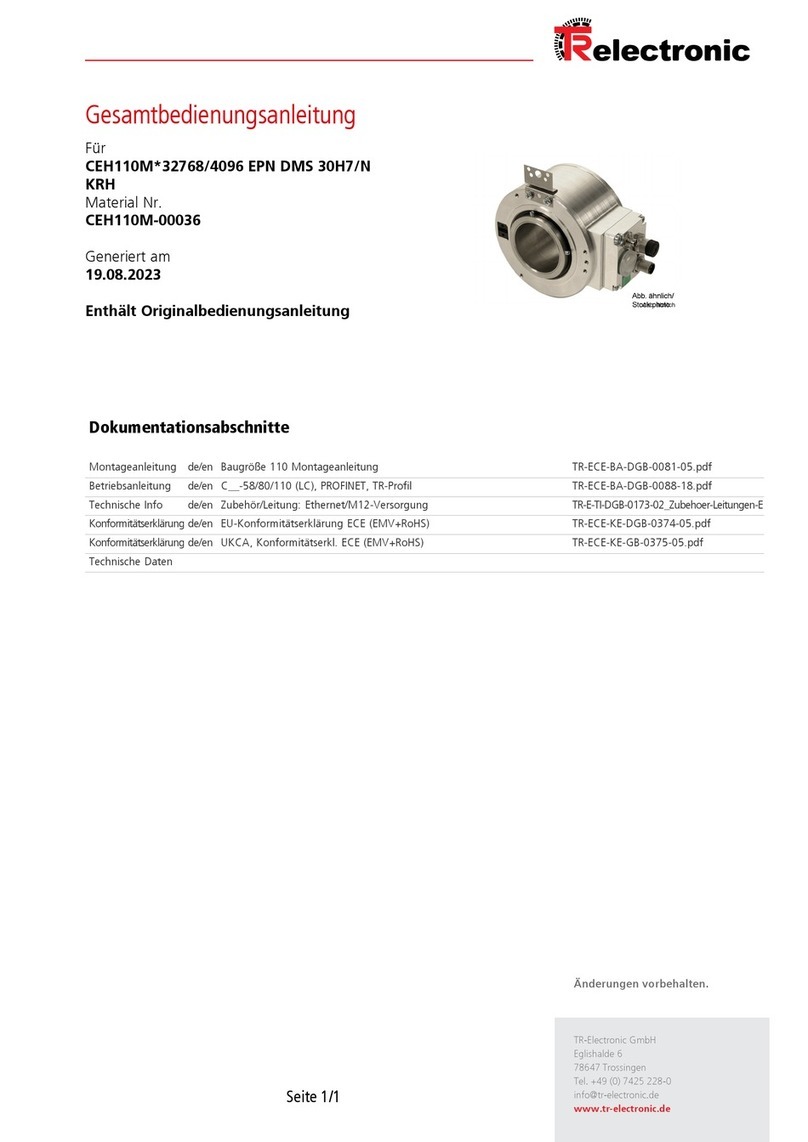Glensound ADDA 1 User manual

ADDA 1, DAC 1 & ADC 1
ANALOGUE/ DIGITAL AUDIO
CONVERTERS
Analogue to Digital and Digital to Analogue (ADDA),
Digital to Analogue (DAC) & Analogue to Digital (ADC)
audio converters.
User Guide
Glensound
6 Brooks Place, Maidstone
Kent, UK, ME 4 HE
Tel: +44 (0) 622 753662
www.glensound.co.uk

Page 2 of 27
Glensound Electronics Ltd
Thank you for choosing a new Glensound product.
All rights reserved.
Information contained in this manual is subject to change without notice, if in
doubt please contact us for the latest product information.
If you need any help with the product then we can be contacted at:
Glensound Electronics Ltd
– 6 Brooks Place
Maidstone
Kent
ME 4 HE
United Kingdom
Telephone: +44 (0) 622 753662
Fax: +44 (0) 622 762330
EMAIL ADDRESSES
General enquires: office@glensound.co.uk
Technical enquires: techinfo@glensound.co.uk
Sales enquires: sales@glensound.co.uk

Page 3 of 27
IMPORTANT SAFETY INSTRUCTIONS
1) Read these instructions
2) Keep these instructions
3) Heed all warnings
4) Follow all instructions
5) Do not use this apparatus near water
6) Clean only with a dry cloth
7) Do not block any ventilation openings. Install in accordance with manufacturer’s
instructions
8) Do not install near any heat sources such as radiators, heat registers, stoves, or other
apparatus (including amplifiers) that produce heat
9) Do not defeat the safety purpose of the polarized or grounding type plug. A polarized plug
has 2 blades with one wider than the other. A grounding type plug has 2 blades and third
grounding prong. The wider blade or the 3
rd
prong are provided for your safety. If the
provided plug does not fit into your outlet, consult an electrician for replacement of the
obsolete outlet
10) Protect the power cord from being walked on or pinched, particularly at plugs,
convenience receptacles and the point where they exit from the apparatus
11) Only use attachments/ accessories specified/ supplied by the manufacturer
12) Use only with the cart, stand, tripod, bracket, or table specified by the
manufacturer, or sold with the apparatus. When a cart is used, use caution when moving
the cart/ apparatus combination to avoid injury from tip over
13) Unplug tis apparatus during lightning storms or when unused for long periods of time
14) Refer all servicing to qualified service personnel. Servicing is required when the apparatus
has been damaged in any way, such as power supply cord or plug is damaged, liquid has
been spilled or objects have fallen into the apparatus, the apparatus has been exposed to
rain or moisture, does not operate normally, or has been dropped
15) Do not attempt to modify this product. Doing so could result in personal injury and/ or
product failure
This symbol is intended to warn that
dangerous voltages within the product are
present and constitute a risk of electric
shock.
This symbol is intended to highlight that
there are important operating &
maintenance instructions in the literature
accompanying this unit.

Page 4 of 27
IMPORTANT: MAINS PLUG WIRING INSTRUCTIONS
This Signature unit is supplied with a moulded mains plug fitted to the AC mains
lead.
Mains wiring colours/ connections:
The Green/ Yellow or Green wire must be connected to the terminal in the plug
marked ‘E’ or with the Earth Symbol.
The Blue or Black wire must be connected to the terminal in the plug marked ‘N’
(Neutral).
The Red or Brown wire must be connected to the terminal in the plug marked ‘L’
(Live).
THIS UNIT MUST BE EARTHED
THIS UNIT IS FITTED WITH AN INTERNAL MAINS FUSE.
The fuse is located internally between the Live terminal of the IEC plug and the
Live input of the power supply. The fuse should only be changed by a qualified
service engineer. If replacing the fuse care should be taken to fit a correctly rated
replacement. The fuse rating can be found in the technical specifications page of
this handbook.

Page 5 of 27
CE
This equipment manufactured by Glensound Electronics Ltd of Brooks Place
Maidstone Kent ME 4 HE is CE marked and conforms to:
Low Voltage Directive: EN60065
Emissions: EN55 03.
Immunity: EN55 03.2
WASTE ELECTRICAL AND ELECTRONIC E UIPMENT
REGULATIONS 2006 (WEEE)
Glensound Electronics Ltd is registered for business to business sales of WEEE in
the UK our registration number is:
WEE/JJ0074UR
RoHS2 DIRECTIVE
EC directive 20 /65/EU restricts the use of the hazardous substances listed below
in electrical and electronic equipment.
This product conforms to the above directive and for this purposes, the maximum
concentration values of the restricted substances by weight in homogenous
materials are:
Lead
0. %
Mercury
0. %
Hexa
valent Chromium
0. %
Polybrominated Biphenyls
0. %
Polybrominated Diphenyl Ethers
0. %
Cadmium
0.0 %

Page 6 of 27
PRODUCT WARRANTY:
All equipment is fully tested before dispatch and carefully designed to provide you
with trouble free use for many years.
We have a policy of supporting products for as long as possible and guarantee to
be able to support your product for a minimum of 0 years.
For a period of one year after the goods have been despatched the Company will
guarantee the goods against any defect developing after proper use providing
such defects arise solely from faulty materials or workmanship and that the
Customer shall return the goods to the Company’s works or their local dealer.
All non-wear parts are guaranteed for 2 years after despatch and any defect
developing after proper use from faulty materials or workmanship will be repaired
under this warranty providing the Customer returns the goods to the Company's
works or their local dealer.

Page 7 of 27
ADDA 1, DAC 1 & ADC 1 Analogue & Digital Audio Converters
Handbook Contents
Issue ,
Description Page No.
Contents
IMPORTANT SAFETY INSTRUCTIONS ........................................................................................................................ 3
PRODUCT WARRANTY: ...................................................................................................................................................... 6
OVERVIEW .......................................................................................................................................................................... 9
PHYSICAL INSTALLATION ............................................................................................................................................... 10
AUDIO BLOCK DIAGRAMS .............................................................................................................................................. 12
EXAMPLES OF USE ........................................................................................................................................................... 13
. ADC Radio Station Analogue to Digital Conversion ..................................................................................... 13
2. DAC Connecting Active Monitors to a Digital System .................................................................................. 14
USER CONTROLS & CONNECTIONS ................................................................................................................................ 15
. Select Button....................................................................................................................................................... 15
2. Done Button ....................................................................................................................................................... 15
3. Up/ Down Buttons .............................................................................................................................................. 15
4. Headphone Volume ........................................................................................................................................... 16
5. Headphone Output Socket ............................................................................................................................... 16
6. Mains In ............................................................................................................................................................... 17
7. External DC Input ............................................................................................................................................... 17
8. Balanced Analogue Outputs 2 .......................................................................................................................... 17
9. Unbalanced Analogue Outputs 2 ..................................................................................................................... 17
0. Word Clock Sync Input .................................................................................................................................. 18
. AES (DARS) Clock Sync Input ........................................................................................................................ 18
2. Unbalanced Analogue Input ......................................................................................................................... 18
3. Balanced Analogue Input .............................................................................................................................. 18
4. Digital Outputs ............................................................................................................................................... 18
5. Digital Inputs .................................................................................................................................................. 18
MENU & SETTING OPTIONS ............................................................................................................................................. 19
DAC Output Level ........................................................................................................................................................ 19
DAC Input Source ........................................................................................................................................................ 20
DAC De-emphasis ........................................................................................................................................... 20

Page 8 of 27
DAC Ident Tone............................................................................................................................................................ 20
ADC Input Level ........................................................................................................................................................... 21
ADC Input Source ........................................................................................................................................................ 21
ADC Clock Source ........................................................................................................................................................ 22
ADC Master Rate .......................................................................................................................................................... 22
ADC Sync Source ......................................................................................................................................................... 23
ADC Data Format ......................................................................................................................................................... 23
ADC Ident Tone............................................................................................................................................................ 24
WIRING INFORMATION ................................................................................................................................................... 25
SPECIFICATIONS .............................................................................................................................................................. 27

Page 9 of 27
OVERVIEW
This handbook covers three products with the ADDA basically being a product that
combines both the DAC and the ADC in one unit.
Signature DAC is a single stereo digital to analogue audio converter.
Signature ADC is a single stereo analogue to digital converter.
Signature ADDA is a bi-directional analogue/ digital converter containing x DAC and x
ADC .
The Glensound Signature Series converter range are professional audio digital and analogue
converters. They are manufactured using high quality components and low noise audio
circuits to provide many years of trouble free use.
The primary job of the converter range is to interface analogue and digital audio equipment
together.
Although traditionally a broadcast manufacturer, Glensound’s products are equally at home
in professional and high end home studios, industrial installations and live pro sound
environments. The converter range can therefore be used in a number of applications.
The converter range are powered from internal switch mode mains power supplies fed from
filtered IEC mains plugs suitable for use Worldwide. They have an internal fuse for safety. The
units can also alternatively be powered from external +/- 2V DC power sources (such as the
Signature Series PS ). If both mains and external DC power sources are present then, if one
power source were to fail the unit would continue to work seemlessly from the other source.

Page 0 of 27
PHYSICAL INSTALLATION
The Glensound Signature Series have been designed to be highly versatile for installation and
can be installed in 9” racks with either their front or rear panels facing the front of the rack.
They can also be mounted underneath desks or work tops and can be either permananetly
mounted or stood (using the supplied feet) on top of desks or worktops.
INSTALLING SIGNATURE SERIES IN A 19” RACK
Firmly hold the signature subrack within the 9” rack and locate in RU of space. Use the
supplied 6mm rack screws to securly attach the unit to the rack.
INSTALLING ADHSIVE FEET FOR NON PERMANENT TABLE TOP MOUNTING
Remove the front rack ears (if they are not required), turn the unit upside down and attach
the supplied 4 sticky feet as per the above drawing.
Signature
g
Series
Keeps Working
PWR ON
PART No
CE
W
50/60Hz 2.7 Watts
100-240V
+/-12V - - -
PIN 1 = GND
PIN 3 = -12V (100mA)
PIN 2 = +12V (100mA)
Top

Page of 27
SWAPPING RACK EARS TO ALLOW THE REAR TO BE INSTALLED AT THE FRONT OF A
RACK
First remove the 4 silver button head screws that fix the rack ears onto the front of the unit as
shown in the top picture above.
Remove the rack ears and turn the unit around for access to its back panel.
Re-fit the 2 rack ears using the same 4 silver button head screws that were removed from the
front as per the bottom picture above.
USING THE MOUNTING HOLES FOR PERMANENTLY ATTACHING THE UNIT ABOVE OR
BELOW A WORKTOP/ DESK
Use either the top or bottom mounting holes as indicated above to use suitable screws to
attach the signature unit to a worktop or bench. **PLEASE ENSURE THAT YOU USE SUITABLE
FIXINGS**
Series
Signature
g
Keeps Working
PWR ON
PART No
CE
W
50/60Hz 2.7 Watts
100-240V
+/-12V - - -
PIN 1 = GND
PIN 3 = -12V (100mA)
PIN 2 = +12V (100mA)
Series
Signature
g
Keeps Working
PART No
PWR ON

Page 2 of 27
AUDIO BLOCK DIAGRAMS
1. Combined ADDA/ ADC/ DAC
00 - 240 VAC
INTERNAL
FUSE
AC/DC PSU + 2V
- 2V
EXT DC +/- 2V
AES3 IN
S/PDIF IN
ToSLINK In
DAC
DARS
(AES3 Reference)
Word Clock In
BALANCED OUTPUT
UNBALANCED OUTPUT
MICROCONTROLLER
DISPLAY
FRONT PANEL
SELECTION
SWITCHES
AES RECEIVER
BALANCED ANALOGUE IN
BALANCED ANALOGUE IN
UNBALANCED ANALOGUE IN
UNBALANCED ANALOGUE IN
Sample Rate
Information
ADC
AES TRANSMITTER AES3 OUT
S/PDIF OUT
ToSLINK OUT
S/PDIF TRANSMITTER
TosLINK TRANSMITTER
Control Data
Set Sample/ Bit Rate/ Fs
Set Fs level
Control
To H'Phones
To H'Phones
From Analogue In
From Analogue In
From Digital In
From Digital In
HEADPHONES
Data
ADC
DAC
ADDA

Page 3 of 27
EXAMPLES OF USE
1. ADC1 Radio Station Analogue to Digital Conversion
Analogue Stereo Signal
From CD Player
AES Digital Output
To Main Digital Router
Master Clock Input
For Digital Sync (optional)
ADC Converter
Monitoring
2 x phono
plugs
x XLR3
(balanced or
unbalanced)
x BNC
connection
x 6.36mm jack
(balanced or
unbalanced)
A radio station may be largely digitally linked, with all router and mixer connections via AES.
If there are no analogue inputs on the system then the Signature ADC can be used to link
the CD player into the digital console.
The stereo analogue outputs from the CD player connect into the 2 x phono analogue inputs
on the Signature ADC .
To maintain digital clock rates throughout the station, an optional link can be made to the
station master clock for the digital clock reference. Without this, the digital clock sampling
frequency rate can be set on the front panel from 44. kHz to 92 kHz.
The single XLR output connects the stereo digital AES signal into the master routers digital
input for use and routing throughout the stations digital infrastructure.

Page 4 of 27
2. DAC1 Connecting Active Monitors to a Digital System
Analogue
Stereo Signal
Active
Monitors
AES Digital Output
From Main Digital Router/Console
DAC Converter
Monitoring
2 x XLR3
(balanced or
unbalanced)
x XLR3
(balanced or
unbalanced)
x 6.36mm jack
(balanced or
unbalanced)
If a broadcast facility largely contains digital connections and you need to connect monitors
to a studio, you will need a suitable analogue output. The Signature DAC can be used to
convert the system AES signal into an analogue output for active studio monitors.
An AES output from the master router or console is connected into the DAC via a single XLR
connector.
Two analogue XLR connections are taken from the DAC and connected to the active
monitors.
A 6.35mm jack socket can be used to connect headphones on the front panel for monitoring.

Page 5 of 27
USER CONTROLS & CONNECTIONS
Note: Picture & description is for the ADDA but facilities and control scale down
to the ADC and the DAC .
FRONT PANEL
1. Select Button
This a dual function button.
Pressing and holding the button for about 5 seconds makes the unit enter setup mode,
whereby parameters can be altered.
Once in setup mode pressing this button sets the current configuration as shown on the LCD
display and automatically moves to the next setup option.
2. Done Button
Pressing this button exits the setup mode.
3. Up/ Down Buttons
These buttons perform dual functions.
A. In normal use pressing these buttons toggles the display to show the settings of the
ADC and DAC inputs on the LCD display to the left of the simple level indicators.
B. When in setup mode pressing the buttons alters the available parameter for the
current menu setting. The number of available steps up and down varies for each
menu depending on available options.
.
SELECT BUTTON
2.
DONE BUTTON
3.
UP/DOWN BUTTONS
4.
H’PHONE VOLUME
5.
H’PHONE SOCKET

Page 6 of 27
4. Headphone Volume
This rotary volume control adjusts the audio output level of the headphone circuit. Turning it
clockwise increases the output level and turning it anti-clockwise reduces the output level.
5. Headphone Output Socket
This 3 pole 6.35mm ( /4”) TRS (Tip Ring Sleeve) jack socket provides the physical output
connection of the internal headphone amplifier.

Page 7 of 27
REAR PANEL
6. Mains In
This AC input accepts a wide range power supply, suitable for use Worldwide. If used in
conjunction with the external DC supply then a seamless redundant power supply will be
provided.
7. External DC Input
This DC input can be used instead or as well as the mains input. It requires a +/- 2V power
source (such as our PS ). If used in conjunction with the mains input it will seamlessly provide
a redundant power source.
8. Balanced Analogue Outputs 2
One pair of balanced stereo Neutrik XLRs providing the audio outputs of the DAC so the
digital input is the audio source. The outputs are electronically balanced with wide band low
noise circuitry. These outputs have the same source as the unbalanced analogue audio
outputs. The output level in relationship to digital full scale can be set in the settings.
9. Unbalanced Analogue Outputs 2
One pair of unbalanced stereo RCA (Phono) connectors providing the audio outputs of the
DAC so the digital input is the audio source. The outputs are electronically balanced with
wide band low noise circuitry. These outputs have the same source as the balanced analogue
audio outputs. The output level in relationship to digital full scale can be set in the settings.
8.
BALANCED
ANALOGUE OUT
9.
UNBALANCED
ANALOGUE OUT
4.
DIGITAL OUT
5.
DIGITAL IN
6.
AC Mains
7.
External DC
2.
UNBALANCED
ANALOGUE IN
3.
BALANCED
ANALOGUE IN
0.
WORD CLOCK
SYNC INPUT
.
AES3 SYNC
INPUT

Page 8 of 27
10. Word Clock Sync Input
This BNC input can be connected to external word clocks to allow the output sample
frequency of the analogue to digital converter to be synced with the external word clock
reference frequency.
11. AES (DARS) Clock Sync Input
This balanced digital audio input can be connected to external digital sources to allow the
output sample frequency of the analogue to digital converter to be synced with the external
source frequency. This input could come from a digital output from a device that is required
to be used as the master clock. This type of digital clock input is sometimes referred to as
DARS (Digital Audio Reference Signal).
12. Unbalanced Analogue Input
This stereo pair of unbalanced analogue inputs are on RCA phono connectors. They feed the
input to the analogue to digital converter (ADC). A setting in the menu selects if this
unbalanced input or the balanced input is used as the source of the ADC.
13. Balanced Analogue Input
This stereo pair of balanced analogue inputs on Neutrik XLR connectors. They are
electronically balanced with low noise wide band audio circuits. They feed the input to the
analogue to digital converter (ADC). A setting in the menu selects if this balanced input or the
unbalanced input is used as the source of the ADC.
14. Digital Outputs
There are 3 digital outputs all of which share the same audio source (the balanced or
unbalanced analogue inputs). The 3 outputs are:
A) Balanced AES3 on XLR
B) S/PDIF (Sony /Philips Digital Interface Format on RCA Phono
C) Toslink (Toshiba Link) optical interface
15. Digital Inputs
There are 3 digital inputs only one of these inputs will be routed to the digital to analogue
converter (DAC), this can be set in the setup menu. The 3 intputs are:
D) Balanced AES3 on XLR
E) S/PDIF (Sony /Philips Digital Interface Format on RCA Phono
F) Toslink (Toshiba Link) optical interface

Page 9 of 27
MENU & SETTING OPTIONS
Note: Options are described for the ADDA but facilities and control scale down
to the ADC and the DAC .
ENTERING SETUP
To enter setup press and hold the yellow ‘SELECT’ switch for about 5 seconds.
MOVING BETWEEN MENUS
There are different menus whose parameters can be set. To move to the next menu just
press the yellow ‘SELECT’ switch.
ALTERING THE PARAMETERS OF THE SELECTED MENU
Once you’ve selected the menu that you wish to alter, pressing the blue up/ down arrow
buttons toggle through all available options for that menu.
Once you’ve selected the setting that you want pressing the yellow ‘SELECT’ switch sets that
setting and moves the menu to the next item.
LEAVING SETUP
To leave setup press the green ‘DONE’ button at any time.
DAC Output Level
This sets the analogue output level in reference to digital full scale (0dBFS). There are 4
options of 0dBFS equalling:
A) + 8dBu
B) + 2dBu
C) +6dBu
D) 0dBu

Page 20 of 27
DAC Input Source
This sets the digital audio input that is fed into the internal D/A converter. There are 3 options:
A) Bal XLR (the AES3 input via balanced XLR) (Max input frequency 92K)
B) Unbal Phono (The S/PDIF input on RCA Phono) (Max input frequency 92K)
C) Optical (The Toslink optical input) (Max input frequency 96K)
DAC De-emphasis
If your digital audio source was originally mastered with pre-emphasis (normally the high
frequency boost) then enabling de-emphasis removes this during the D/A process.
DAC Ident Tone
Turning on the DAC Ident tone (enabling it) adds a kHz tone @ 0dBu to the analogue output.
This can be useful for fault finding.
This manual suits for next models
2
Table of contents
Other Glensound Media Converter manuals
